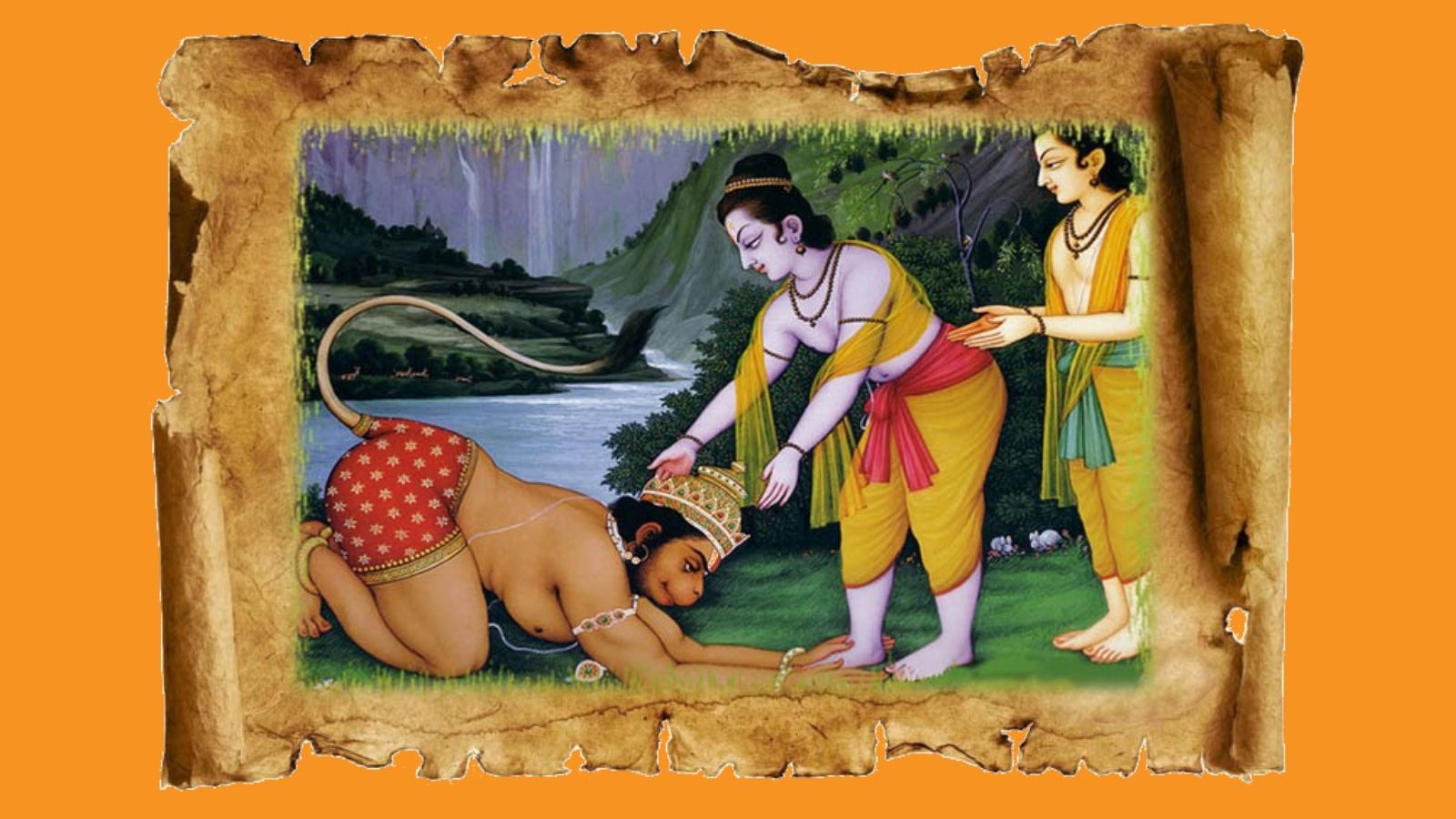Ramayan is not just an epic with historical records. It carries timeless wisdom that applies to the social, personal, and professional realms of life. Sri Rama’s first meeting with Lord Hanuman is a classic case of interpreting a person’s qualities with his speech and body language.
By Shobhit Mathur, Co-Founder & Dean at Rashtram
The first meeting of Sri Rama and Hanuman is described in the Kishkinda Kanda (4th book) of the Valmiki Ramayana. According to the story, in the search of Ma Sita, Sri Ram and Lakshmana were walking through the Kishkinda forest (present day Vijayanagara district of Karnataka). It is here that Hanuman Ji first meets them as a minister and ambassador of King Sugriva. On behalf of Sugriva, Hanuman Ji seeks the friendship of Sri Rama and Lakshmana. Based on the speech of Hanuman Ji, Sri Rama explains to Lakshmana the character of Hanuman Ji. This is a classic lesson on understanding a person’s qualities through one’s speech. As a corollary, this dialogue also teaches us what it takes to develop mastery in oration. At a time when the quality of public debates has dropped to a low, we can draw lessons from Hanuman Ji’s oration.
Some excerpts of the dialogue between Sri Rama and Lakshmana on Hanuman Ji’s qualities are highlighted below:
On Prior Scholarship
नानृग्वेदविनीतस्य नायजुर्वेद्धारिणः।
नासामवेदविदुषश्शक्यमेवं विभाषितुम् ||4.3.28||
अनृग्वेदविदुषः not trained in Rigveda, एवम् in that way, भाषितुम् to talk, न शक्यम् not possible, अयजुर्वेद्धारिणः not a scholar in Yajurveda, न not, असामवेदविदुषः not a scholar in Samaveda, न not
“Unless one is well versed in Rigveda, Yajurveda and Samaveda, for sure, it is not possible for anyone to articulate so well”. Reciting the 3 Vedas flawlessly requires mastery of memory, phonetics, pitch and notes of the speech, etc. Sri Rama could see that in Hanuman Ji’s speech.
On Mastery over Grammar
नूनं व्याकरणं कृत्स्नमनेन बहुधा श्रुतम्।
बहु व्याहरताऽनेन न किञ्चिदपशब्दितम् || 4.3.29 ||
नूनम् surely, अनेन by him, कृत्स्नम् entire, व्याकरणम् grammar, बहुधा in many ways, श्रुतम् studied, बहु much, व्याहरता spoken, अनेन by him, किञ्चित् even a little, अपशब्दितम् wrong pronunciation
“Surely, he seems to have studied well the whole of grammar, for there is not a single mispronunciation in his entire speech”. This verse has also been translated to mean that the speech of Hanuman Ji is comprehensive without any additional word. Shri Rama is highlighting the importance of clarity and conciseness in the speech.
On Body Language
न मुखे नेत्रयोर्वापि ललाटे च भ्रुवोस्तथा।
अन्येष्वपि च गात्रेषु दोषस्संविदितः क्वचित् || 4.3.30 ||
मुखे in his face, नेत्रयोर्वापि in the eyes or, ललाटे on the forehead, तथा likewise, भ्रुवो between the eyebrows, अन्येष्वपि च or anywhere, गात्रेषु parts of body, क्वचित् even a little, दोषः fault, न संविदितः not found
“No fault can be found in his face, eyes, forehead, between the eyebrows or any other part of his body (during his expression)”. This verse highlights the importance of a composed body language when one is speaking. This requires mastery over the body and thought.
On Diction and Oration
अविस्तरमसन्दिग्धमविलम्बितमद्रुतम्।
उरस्थं कण्ठगं वाक्यं वर्तते मध्यमे स्वरे || 4.3.31 ||
वाक्यम् sentences, अविस्तरम् not too elaborate, असन्दिग्धम् not ambiguous, अविलम्भितम् not dragging, अद्रुतम् not fast, उरस्थम् raised in his chest, कण्ठगम् from the throat, मध्यमे medium, स्वरे tone
“His sentences are not too elaborate, not ambiguous, not dragging, not fast, raised in the chest or throat, in a medium tone.” Shri Rama explains the importance of right framing and recitation of speech.
A Relook into the Ramayana
The Ramayana is popularly known as the biography of Sri Rama. The beauty of the Indian epics is that they are not merely historical records. They carry timeless lessons for humanity. Every generation has read them and applied them in their context. These lessons are not limited to personal life, they are equally relevant for public life. Hopefully, this article has irked your interest to explore the Ramayana further in this light.
References
- Valmiki Ramayana Translation on IIT Kanpur portal: https://www.valmiki.iitk.ac.in/sloka?field_kanda_tid=4&language=dv&field_sarga_value=3

